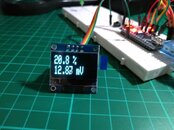Pao
Contributor
I can't seem to find any info on the subject for analyzers, most are recommendation for rebreathers.
I am doing a project on an Arduino based O2 analyzer. I would like to know if there is a cutoff voltage value (in air) for the sensor to be considered "bad" and lose its linearity significantly. I would like to incorporate a warning into the code when the sensor might be failing or has failed. Thanks in advance.

I am doing a project on an Arduino based O2 analyzer. I would like to know if there is a cutoff voltage value (in air) for the sensor to be considered "bad" and lose its linearity significantly. I would like to incorporate a warning into the code when the sensor might be failing or has failed. Thanks in advance.




